
Sierra Bouchér
Sierra Bouchér is a Washington, D.C.-based journalist whose work has been featured in Science, Scientific American, Mongabay and more. They have a master's degree in science communication from U.C. Santa Cruz, and a research background in animal behavior and historical ecology.
Latest articles by Sierra Bouchér

Earth's magnetic field is weakening — magnetic crystals from lost civilizations could hold the key to understanding why
By Sierra Bouchér published
Artifacts from the Iron Age have revealed an intense historical magnetic anomaly in the Middle East. Could using a similar approach elsewhere help us unravel the mysteries of Earth's magnetic field?
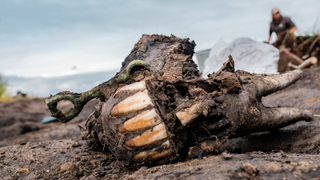
Archaeologists have found dozens more sacrificed horses in 2,800-year-old burial in Siberia that's eerily similar to Scythian graves
By Sierra Bouchér, Kristina Killgrove last updated
The sacrifices could be an early form of a Scythian burial tradition that lasted for hundreds of years.

Where would a compass point in outer space?
By Sierra Bouchér published
On Earth, the magnetic field of our planet points a compass north, but in space, things are a bit more complicated.
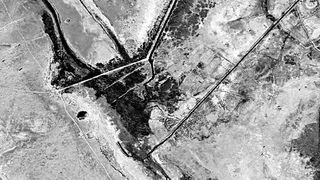
Declassified spy satellite images reveal 1,400-year-old battle site in Iraq that set off the Muslim conquest
By Sierra Bouchér published
Historical texts that mentioned details about the battle site helped researchers match the images to the lost town of al-Qadisiyyah.
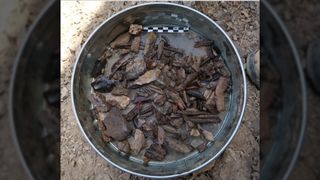
150,000-year-old rock-shelter in Tajikistan found on 'key route for human expansion' used by Homo sapiens, Neanderthals and Denisovans
By Sierra Bouchér published
A newfound rock-shelter in Tajikistan has artifacts created by ancient humans spanning 130,000 years.
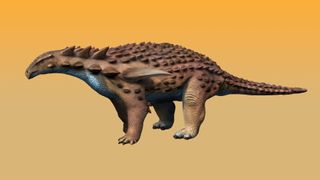
Armored dinosaur could withstand the impact of a high-speed car crash, thanks to the 'bulletproof vest' over its plate armor
By Sierra Bouchér published
The new research suggests that this dinosaur's armor was adapted for fighting between members of Borealopelta markmitchelli.
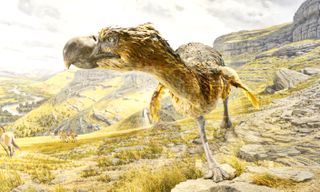
A giant crocodilian killed the largest 'terror bird' ever found, 12 million years ago
By Sierra Bouchér published
The fossilized leg bone of the terror bird went unidentified for almost 20 years.
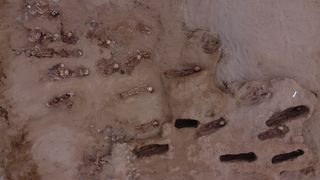
'An offering to energize the fields': 76 child sacrifice victims, all with their chests cut open, unearthed at burial site in Peru
By Sierra Bouchér published
An analysis of previous sacrifices at the same site suggests the victims were conquered people brought to work on the land.
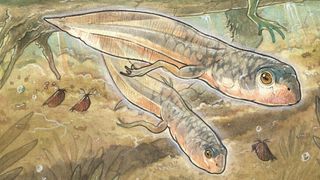
Oldest tadpole on record was a Jurassic giant
By Sierra Bouchér published
The fossilization of the tadpole's "delicate structures," like its eyes and gills, allowed for a detailed analysis of the rare find.

Lasers reveal Maya city, including thousands of structures, hidden in Mexico
By Sierra Bouchér published
The new city, dubbed Valeriana, was a dense urban settlement with temple pyramids and a ball court.

How many nuclear bombs have been used?
By Sierra Bouchér published
The first nuclear bomb test, conducted in 1945, set off an international arms race that included nuclear testing. But how many nuclear bombs have been detonated during tests and in active war?
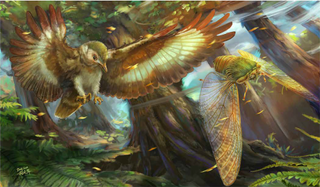
Predatory birds from the Jurassic may have driven cicada evolution for millions of years
By Sierra Bouchér published
Researchers calculated the flight ability of more than 80 ancient cicada species to analyze their evolution over time.
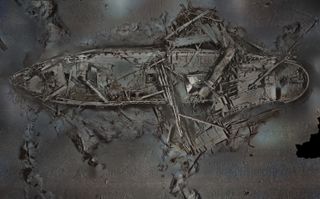
New 3D scans reveal stunning details of Shackleton's doomed Endurance expedition to Antarctica
By Sierra Bouchér published
The Endurance shipwreck spent 107 years submerged in Antarctic waters before being rediscovered and later scanned in 3D.

Half-a-billion-year-old 'marine Roomba' is earliest known asymmetrical animal
By Sierra Bouchér published
A backward question mark shape on the creature's back reveals early animal evolutionary history.
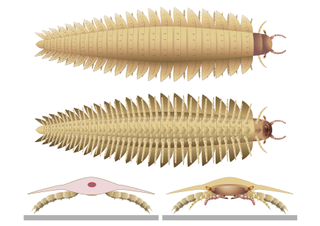
Never-before-seen head of prehistoric, car-size 'millipede' solves evolutionary mystery
By Sierra Bouchér published
The fossil showed unique stalked eyes and centipede-like characteristics.

Medieval walrus ivory may reveal trade between Norse and Indigenous Americans hundreds of years before Columbus, study finds
By Sierra Bouchér published
The Thule Inuit people and Norse both hunted walrus in the High Arctic in the 13th century, according to a new study.

Alien civilizations are probably killing themselves from climate change, bleak study suggests
By Sierra Bouchér published
Astrophysicists estimate that any exponentially growing technological civilization has only 1,000 years until its planet will be too hot to support life.
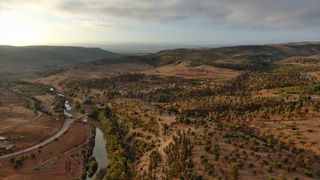
Remains of 5,000-year-old farming society as large as ancient Troy discovered in Morocco
By Sierra Bouchér published
The society "bridged the gap" between Africa and Europe over 5,000 years ago.

What happens when you hold in a fart?
By Sierra Bouchér published
We all hold in farts from time to time, but where does the gas go?

Duck-billed dino with absolutely enormous honker unearthed in Mexico
By Sierra Bouchér published
The newly named dinosaur is unique to Mexico, and it's helping change scientists' understanding of dinosaur ranges across the Americas.
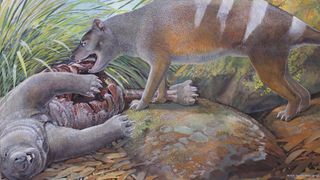
Fossils of bone-crushing and meat-slashing Tasmanian tiger ancestors discovered in Australia
By Sierra Bouchér published
Three newfound thylacine relatives recently unearthed in Australia suggest that marsupial predators were more widespread in ancient Australia than previously thought.
Get the world’s most fascinating discoveries delivered straight to your inbox.
